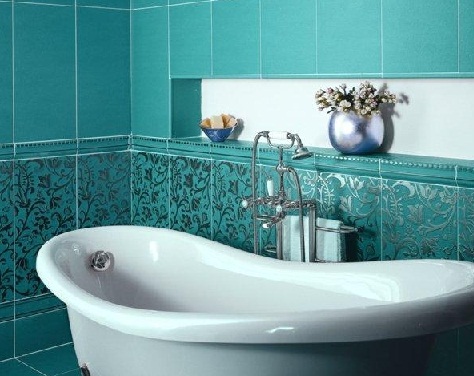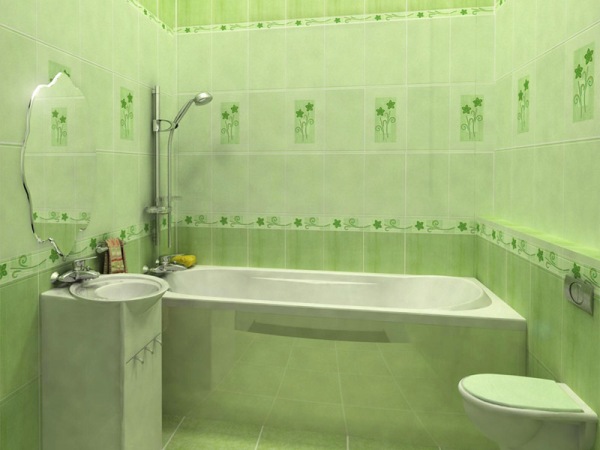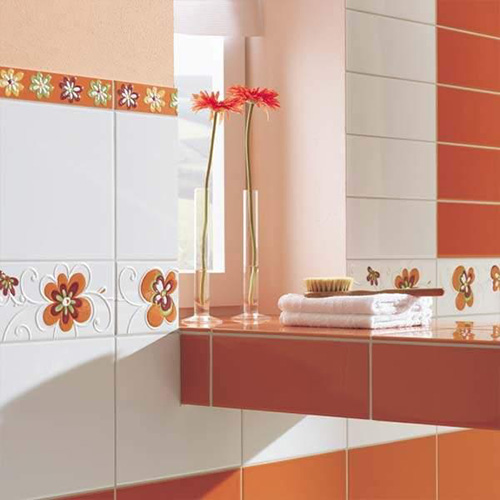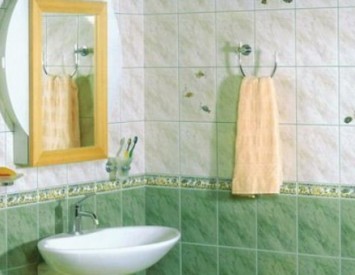Any repair is a troublesome business and requires a certain training. This is especially true for the bathroom, since the room is constantly exposed to moisture. When repairing it, it is very important not only to create a beautiful interior, but also to choose the right material and efficiently work on decoration of walls and floor. By tradition, ceramic tiles are used for this - it has properties that meet all the requirements of the cladding: beautiful appearance, hygiene, moisture resistance and strength.
Content
Tile in the bathroom
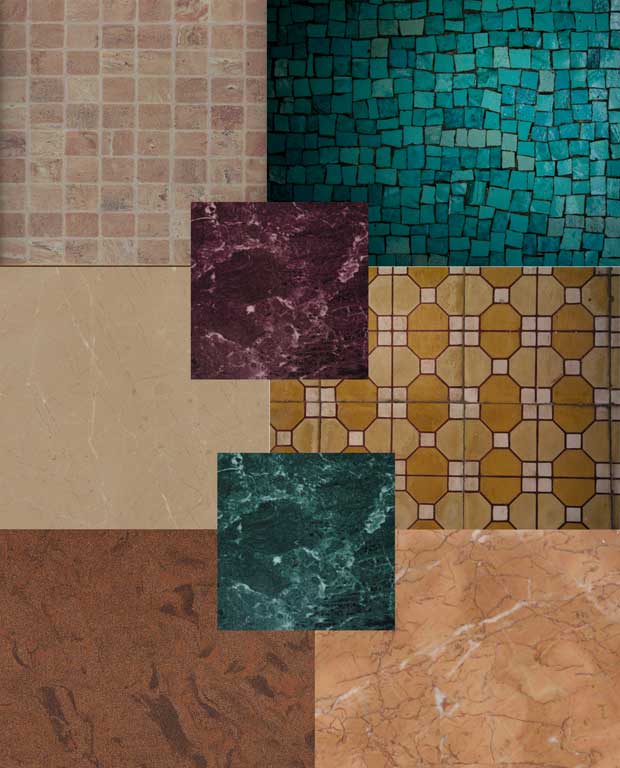
Tile quality requirements:
- Low degree of water absorption - up to 20%. The porous surface of the reverse side of the tile indicates its susceptibility to penetration of moisture.
- Strength.
- Chemical resistance - has 5 degrees and is indicated by the letters of the Latin alphabet from A to D. The products of class AA are the highest quality in this parameter. Marking “A” also indicates sufficient stability of the tile to the effects of household chemicals.
- Abrasion resistance - indicated by Roman numerals from I to V. The higher the class, the greater the intensity of movement can withstand the tile without prejudice to the appearance. But for bathrooms, the tile of the first group (Pei I) is perfect. The wear resistance parameter is important when choosing floor tiles.
- Resistance to steam and temperature changes.
- A clear, flat texture of the back of the tile - otherwise it will not have sufficient grip with the wall and will not last long.
- Uniform coloring, bright color of the pattern.

Symbols applied to the packaging of tiles indicate all its parameters. If among them there is an icon with squares of different shades, then perhaps the tile has differences in color.
Dimensions and decorative properties of tiles
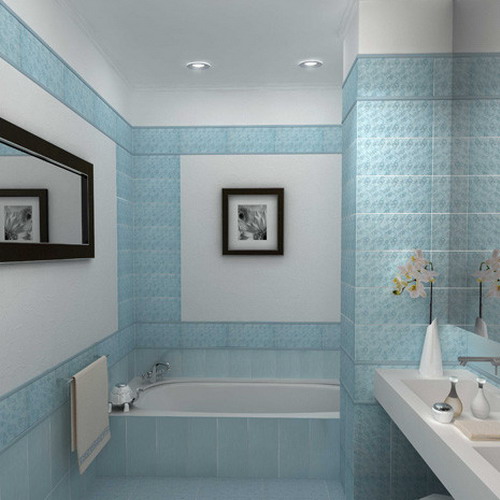
When choosing tiles, not only its practical properties are taken into account, but also its decorative functions. Traditional pastel shades will always be in fashion. They do not bother, because they do not irritate perception and allow you to relax and relax. In addition, light colors visually expand the space. Bright, saturated colors excite the psyche and, perhaps, very soon there will be a desire to replace the tile.
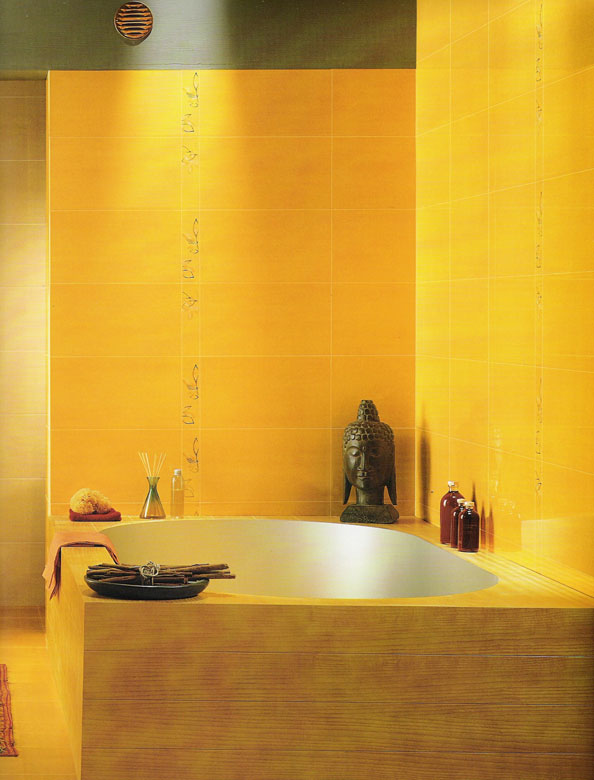
Light tones and average tile size - the best option for a small room. Large tiles look great in a spacious room, especially in combination with a mosaic or any other pattern.
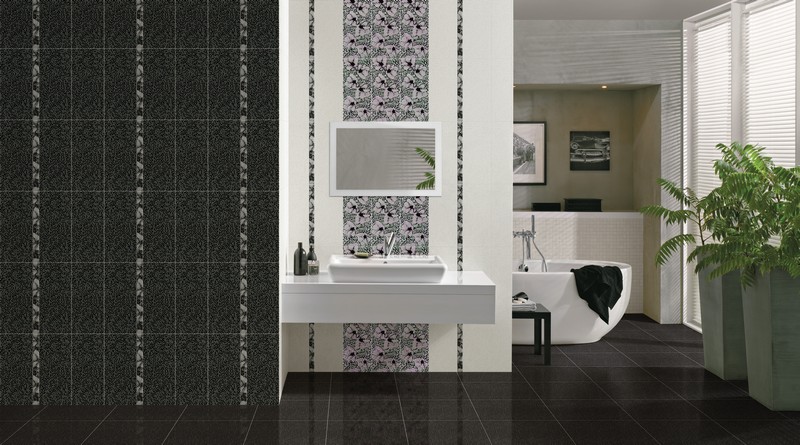
Tile in the bathroom - equipment
The tile is usually purchased in the following kit:
- wall tiles - a relatively soft structure of the material allows you to cut it without much effort and adjust it to the bends of the surface;
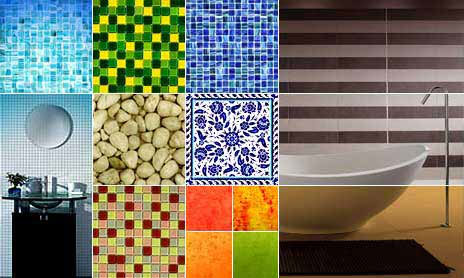
- floor tiles - more dense compared to facing tiles, resistant to chemical solutions, wear resistant, with a rough texture;
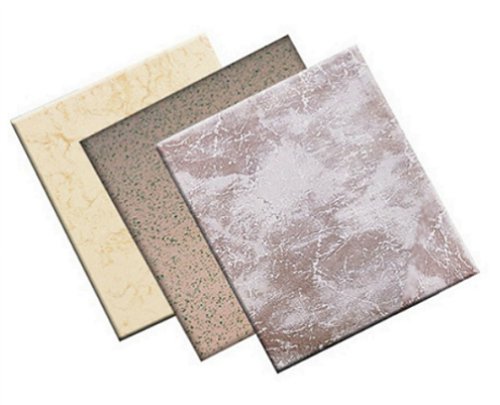
- decorative elements: borders, “pencils”, tiles with a pattern or pattern for creating a panel or individual decorative elements.
Modern material is produced by collections, which include all the elements of the kit made in the same color scheme, in a single theme and with certain drawings. In this case, the choice of material for facing the bathroom is greatly facilitated.

Cam tiles in the bathroom - materials and tools
When carrying out work, the following materials should be available:
- tile;
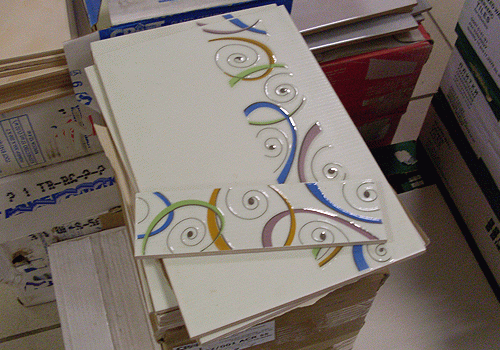
- grouting mixture;
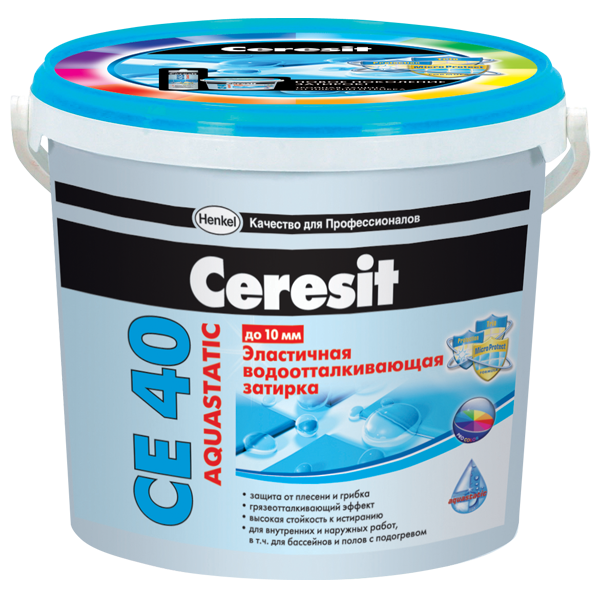
- primer;
- glue mixture;
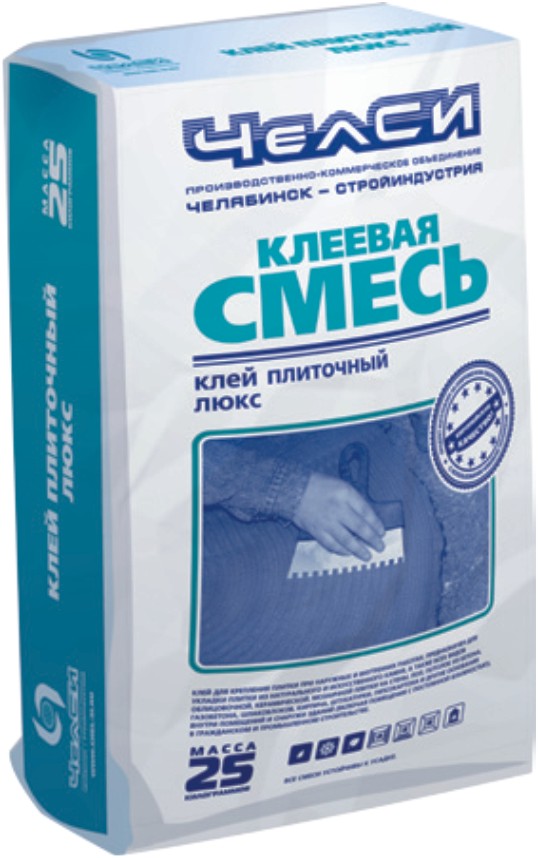
- tile separators;
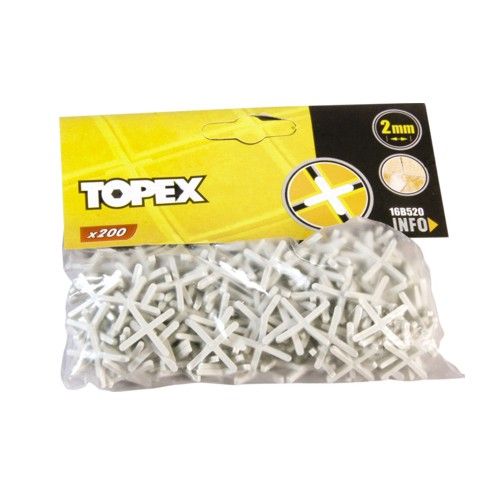
- internal and external plastic corners.

Tools that are used to lay a tile:
- adhesive capacity;
- drill with special tile drills and a mixer nozzle;
- cutter for tiles;
- bulgarian;
- spatulas: gear and ordinary;
- kiyanka;
- level, plumb, roulette.

Calculation of the number of tiles
Before buying the material, the number of all styling elements is calculated. To do this, measure the width, length and height of the bathroom and doorway. There are two calculation options:
- By surface area - its width and height (length) are measured and multiplied by each other. Then the same manipulations are carried out with one tile. The area of \u200b\u200bthe wall or floor is divided into the area of \u200b\u200bthe tile.
- 10% is added to the result - for unforeseen expenses.
- The piece calculation is a more reliable and accurate way to calculate the amount of material:
For example:
- wall height 2.5 m;
- width –2 and 1.6 m;
- doorway - 2.0x0.6 m;
- wall tiles - 20x30 cm;
- floor - 33x33 cm.
The width of the floor is divided by the size of the tile - 1.6: 0.33 \u003d 4.8 pcs. The result is rounded to 5 - so many rows of tiles will lie on the floor.
Then the same procedure is carried out with the length of the floor - 2: 0.33 \u003d 6.06 pcs. With rounding - 6.5 pcs. (number of tiles in a row).
6.5x5 \u003d 32.5-33 pcs. Tiles will be needed on the floor of such an area.
Similarly, the calculation of the amount of material for the walls is carried out:
- 2: 0.2x2 \u003d 20, where 2 and 0.2 is the width of the surface and tiles, respectively, and 2 - the number of planes with such a parameter.
- Next, a calculation of the number of tiles in a row for two other walls is calculated - 1.6: 0.2x2 \u003d 16 pcs.
- The results are added (16+20 \u003d 36 pcs.).
- Then the number of rows 2.5: 0.3 \u003d 8.3 is calculated. The result is rounded to 8.5.
- 36x8.5 \u003d 306 pcs. - This amount of tile would be needed for solid walls of the bath.
- One of them takes into account the size of the doorway. The number of elements for it is deducted from the overall result. 306- (2: 0.3) x (0.6: 0.2) \u003d 286 pcs. with rounding.
Total, for the bathroom the offered area you will need 286 and 33 tiles per walls and floor, respectively. The “reserve” is added to the resulting number, in the calculation of marriage and defects in work.
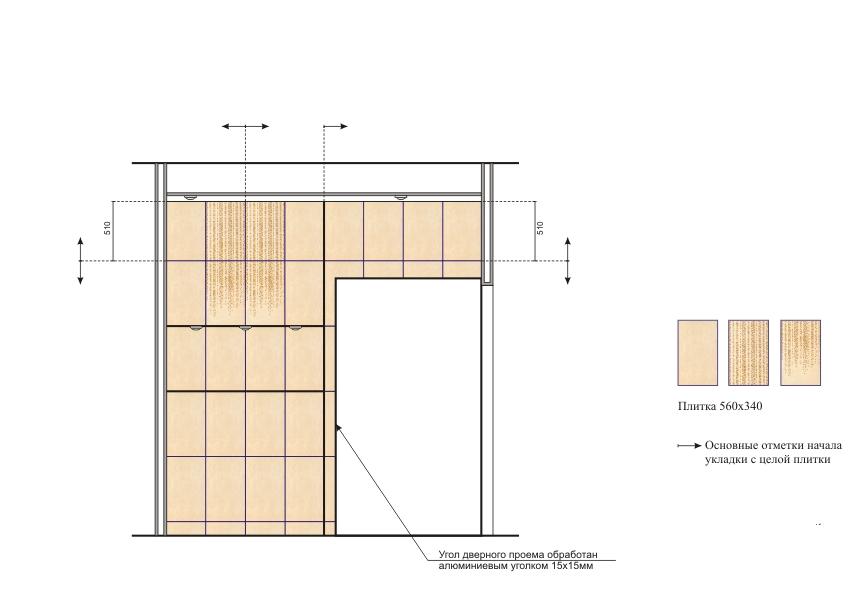
The calculation of the decor elements occurs in a similar way, but, first of all, a scheme of their location is made. In this case, the type of styling and the need for fitting according to the drawing and color scheme are determined. A precisely executed sketch will help to avoid mistakes when working.

Types of styling
There are several types of masonry in the bathroom:
- the usual, standard - tiles are laid in a seam in a seam, parallel to the floor or wall;
- chess;
- diagonal - tiles are laid at an angle of 45º;
- diagonal-shahmaty-used when working with tiles of different colors;
- ordinary with decorative elements or borders.
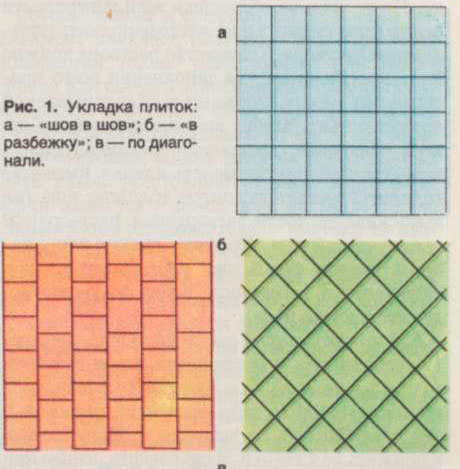
Preliminary work
Walls and floor - surface preparation
The decoration of the bathroom with tiles requires a flat, prepared surface. The material should be laid on a uniform, small layer of adhesive mixture. Otherwise, the tile may fall or its edges will begin to perform. Therefore, before proceeding with the cladding of walls and floor, they prepare their surface:
- With the help of a chisel and hammer, the walls are cleaned of the remains of an old, ready to crumble, coatings and are aligned with a new layer of plaster with a net reinforcement. The use of putty worsens the adhesion of the adhesive mixture.
- The surface is checked vertically and horizontal. In case of deviations (more than 2-4 millimeters), the surface is aligned in the same way.
- Proceedings are dismantled, thresholds and skirting boards.
- The old flooring is removed. If this is tile, then two options are possible: a new tile on the floor is laid in the bathroom on top of the old. But the plane should be rough, so it is carefully treated with sandpaper and primed. This option is quite unreliable and is used only in case of strong adhesion of the old tile with floor. And the second option - the old tile is dismantled using a jack of a hammer and a chisel.
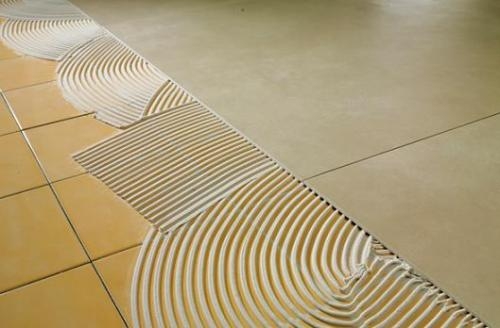
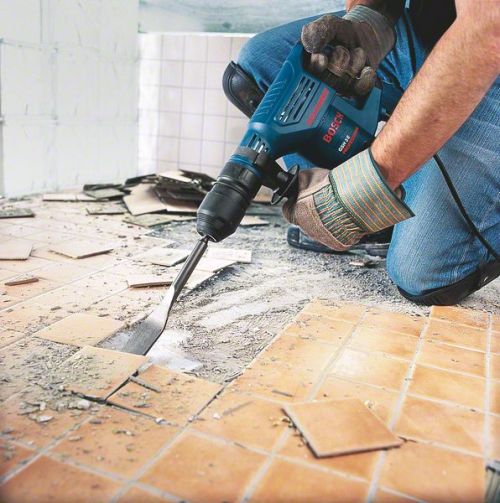
- All cracks are sealed, the floor is aligned with a cement mortar.
- The surfaces are cleaned of dirt, garbage and dust and primed.
- Waterproofing the floor and parts of the wall are carried out. Rolled materials can be put on the floor - they are more economical. For walls, coating waterproofing is suitable - it lies better and will not require special labor costs.
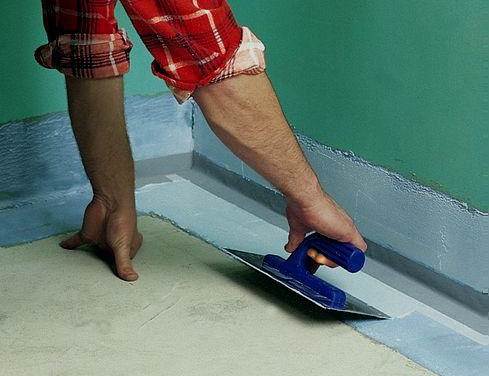
- A wet screed is formed.
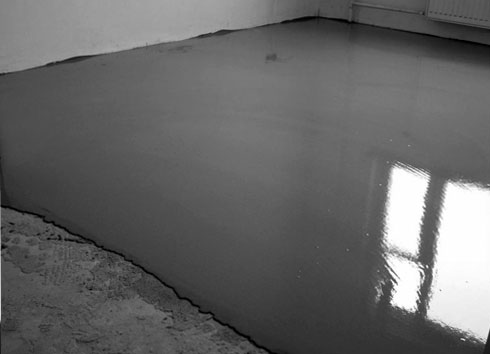
Marking
- On the bottom of the wall, a rail or plastic corner is strictly horizontally attached using a level. Then a vertical line for controlling control is drawn.
- A feature is held on the floor, along which the edges of the tiles will pass in the front row.
How to put a tile in the bathroom - installation
Laying tiles:
- Prepared a glue solution. Due to the fact that it dries quickly, the composition is kneaded in small portions using a drill with a mixer nozzle.

- There are two options for applying glue - on the wall or on the tile itself. The first way is considered classic, but many masters are sure that the second method is no worse. The composition is applied evenly on the surface with a gear spatula.
- The tile is applied to the wall, just in the corner between the vertical and horizontal marking, and rotates along the axis with light movements.
- The level of the tile is checked. The time for its correction is about 10 minutes after laying. It will be more difficult to do later. To deepen the tiles, use rubber eggs.
- The following tiles are glued and delimiters (crosses) are installed. Their optimal size is 3 mm.
- Thus, the first row is laid out and is checked by the level in all directions.
How to put tiles in the bathroom, video:
In order for the next tiles to fit easier, the glue under the first row should grasp. With a long break in work, all excess solutions are removed, otherwise it will have to be abandoned then.
To facing the surface around the pipes, a round hole is cut through with a special nozzle with a special nozzle.
Typel bathroom decoration - Corner joints
Usually, to decorate the angles of the wall, the tiles have to be cut into fragments. The tile cutter is the most convenient tool for such work. But it requires a certain experience.
When cutting a narrow part of the tile, it is better to use a grinder or break off it by the incision.
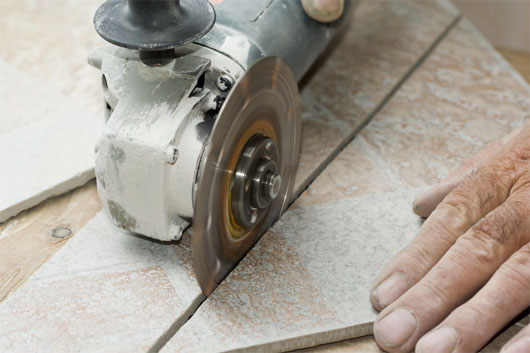
The joints of external and internal corners are decorated with plastic corners, combined in color with tiles.
Grout of the seams
After drying the adhesive mixture, all the crosses are removed, the surface of the tiles and cracks are thoroughly cleaned of dust, and the stitches are fugging. For this work, ready -made epoxy and silicone grouts or a dry cement mixture are used, which is diluted with water.

To facilitate the subsequent cleaning on the edges of the tiles, masking tape is glued. A small amount of grout is applied to the gap with a rubber spatula and pressed into it. Then, the excess of the mixture is removed across the seam and its surface is aligned.
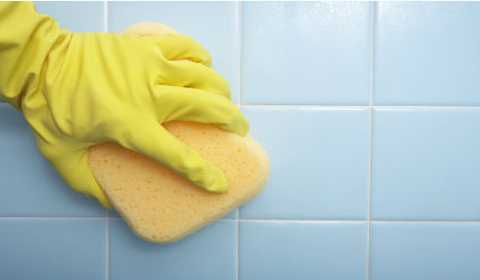
After the grout dries, the painting tape is peeled off and the entire tile surface is cleaned.
Bathroom tile, photo:

